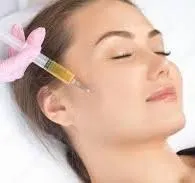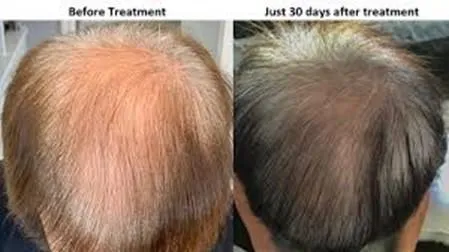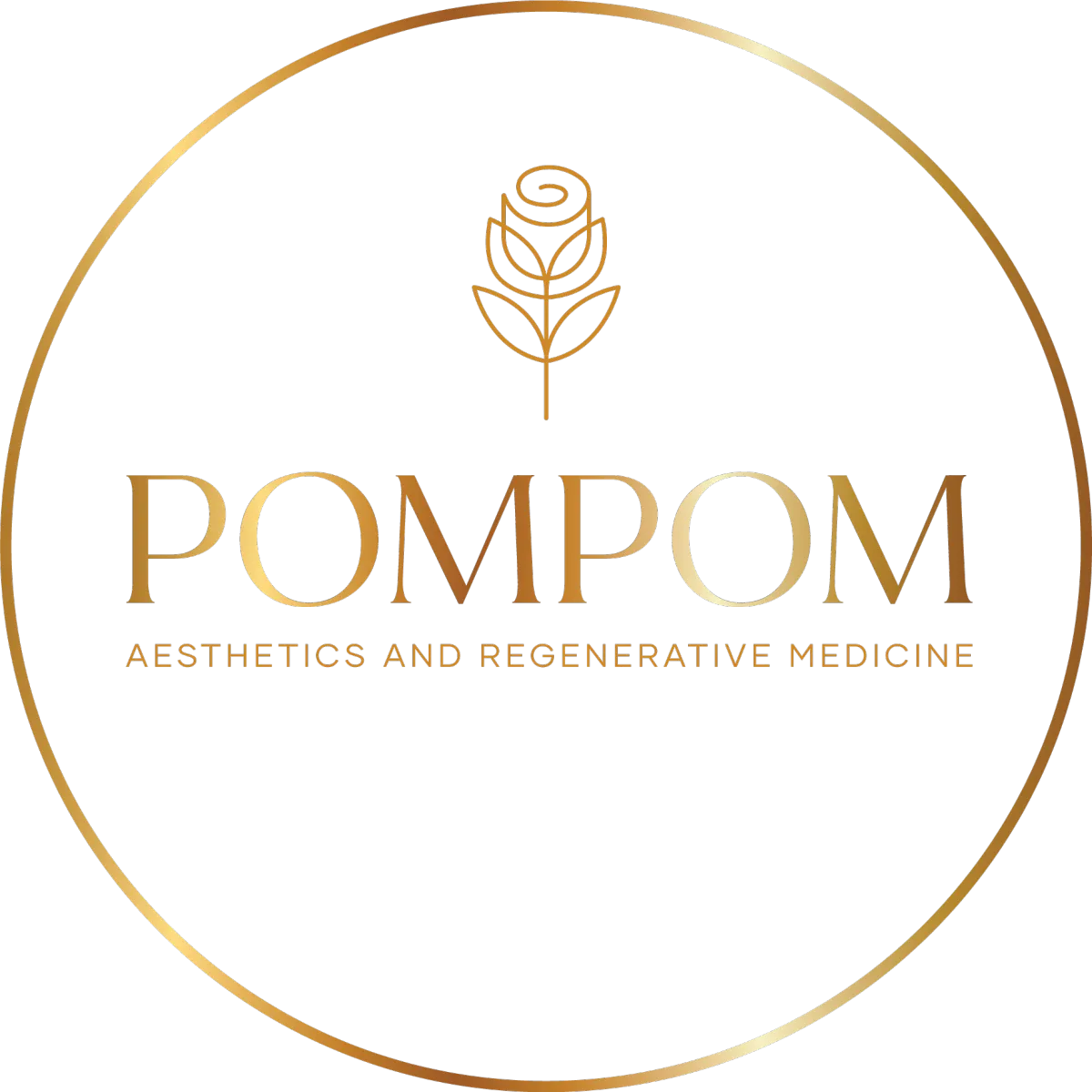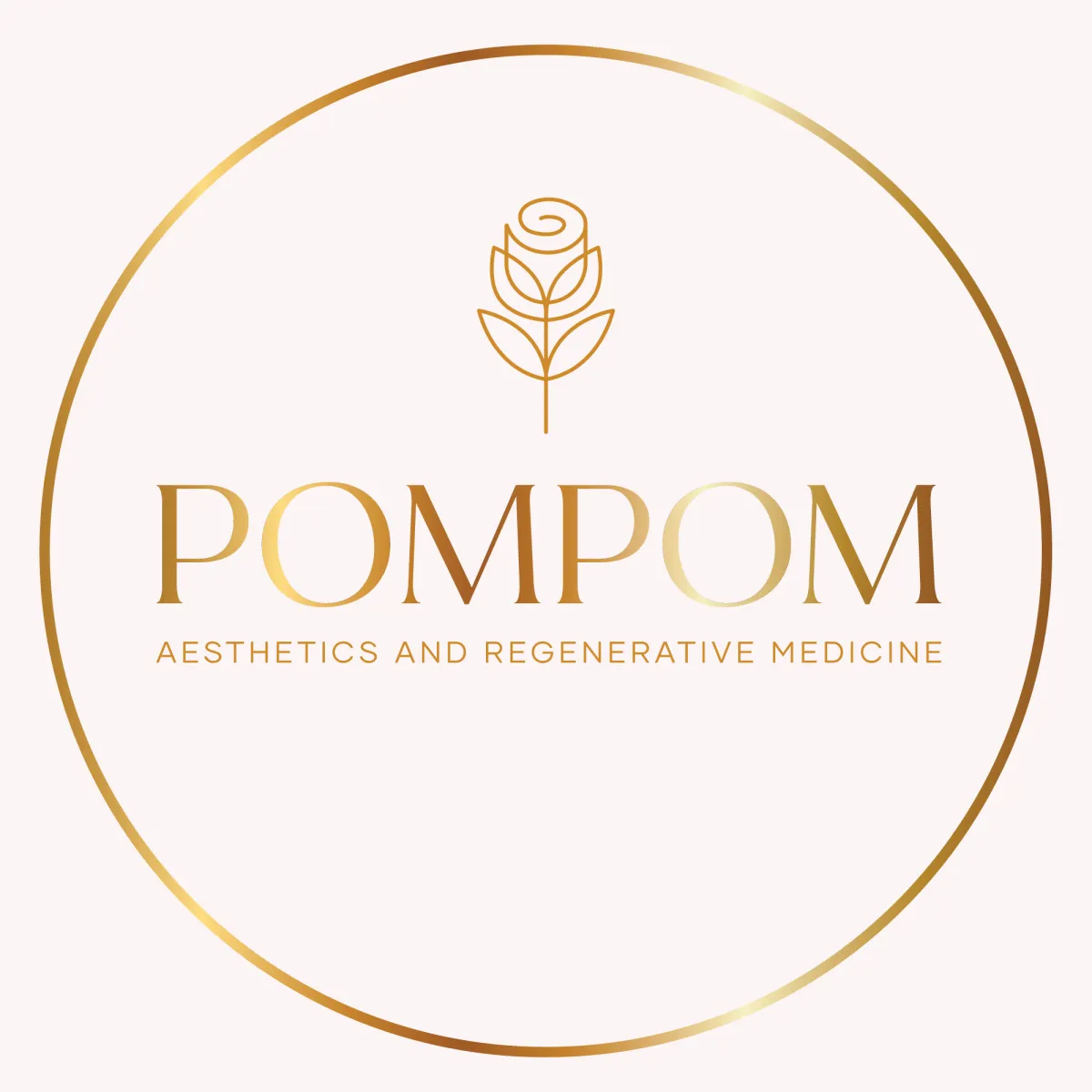REGENERATIVE MEDICINE
Our Regenerative Medicine treatments repair and restore your body from within, stimulating natural healing for lasting vitality and rejuvenation.
REGENERATIVE MEDICINE
Regenerative medicine is an innovative and growing field within medical aesthetics and is an area that is producing great excitement for Pom Pom! This move towards regenerative treatments reflects the growing acceptance and understanding of aesthetic medicine as a field that firmly bridges both medical and cosmetic treatments.
Research shows that people are now seeking minimally invasive treatments in combination with, and complementary to, other injectable treatments such as anti-wrinkle treatments and fillers. Unlike traditional treatments that primarily address superficial concerns, regenerative medicine aims to restore and rejuvenate the skin at a cellular level. Three exciting advancements in this domain are platelet-rich-plasma (PRP), polynucleotides and exosomes.
These cutting-edge products are reshaping the way we approach skin health, offering promising results with minimal downtime. However, they can be confusing and baffling as to their uses and effects, and so let’s break them down into a more understandable form.
PRP (Platelet-Rich-Plasma)
In the quest for youthful, radiant skin, regenerative medicine has emerged as a game-changer. Alongside polynucleotides and exosomes, platelet-rich plasma (PRP) therapy is one of the most promising treatments in the regenerative field. It is a proven treatment which harnesses the body’s natural healing abilities, thereby restoring and rejuvenating your skin.

What is PRP Therapy?
Platelet-Rich Plasma (PRP) therapy is a non-surgical, minimally invasive procedure that uses a patient’s own blood to promote skin rejuvenation. The treatment involves drawing a small amount of bloodin a glass vial, processing it to concentrate the platelets, and then reintroducing it into targeted areas of the face where you may have some concerns. These platelets contain growth factors that stimulate collagen production, tissue repair, and cell regeneration, resulting in smoother, firmer, and more youthful-looking skin.
The Science Behind PRP
Our blood is composed of red blood cells, white blood cells, platelets, and plasma. The platelet component plays a crucial role in wound healing and tissue repair. When PRP is injected into your skin, the concentrated platelets release bioactive proteins and growth factors that:
- Stimulate collagen and elastin production
- Improve skin texture and tone
- Reduce fine lines and wrinkles
- Enhance skin hydration and elasticity
- Promote faster healing and tissue regeneration
Benefits of PRP for Facial Rejuvenation
1. Natural & Safe: Since PRP is derived from your own blood, there is minimal risk of allergic reactions or adverse side effects.
2. Non-Surgical & Minimally Invasive: Unlike facelifts or other cosmetic procedures, PRP requires little to no downtime.
3. Long-Lasting Results: With consistent treatments, PRP can significantly improve skin health and maintain a youthful glow.
4. Versatile Treatment: PRP can be combined with microneedling, laser therapy, or dermal fillers to enhance its effectiveness.
The PRP Facial Rejuvenation Procedure
1. Blood Draw: A small sample of blood is taken from the patient’s arm.
2. Centrifugation: The blood is spun in a centrifuge to separate and concentrate the platelets.
3. Application: The PRP is either injected into targeted areas or applied topically in combination with microneedling to enhance absorption.
4. Recovery & Results: Mild redness or swelling may occur but usually subsides within a day or two. Over the following weeks, the skin gradually improves in texture, firmness, and overall radiance.
Who Can Benefit from PRP Facial Rejuvenation?
PRP therapy is ideal for patients looking to:
- Reduce fine lines, wrinkles, and sagging skin
- Improve skin tone, texture, and overall appearance
- Treat acne scars and hyperpigmentation
- Achieve a natural, youthful glow without synthetic fillers or invasive surgery
Conclusion
Platelet-Rich Plasma (PRP) therapy is at the forefront of regenerative medicine, offering a natural, safe, and effective solution for facial rejuvenation. Whether you are looking to slow some signs of aging or enhance your skin’s natural beauty, PRP is a powerful tool that utilises your body’s own healing potential. Book a consultation with us to see whether PRP therapy is the right choice for you!
Are you ready to experience the regenerative power of PRP? Schedule a consultation today at Pom Pom, and take the first step toward radiant, youthful skin!
POLYNUCLEOTIDES
What are polynucleotides?
Polynucleotides have gained a significant amount of attention because they are made from highly purified fragments of RNA and DNA from salmon or trout sperm, which stimulate the production of collagen and hyaluronic acid in human skin. More specifically, polynucleotides are injectable biostimulators, which means they work at a cellular level to encourage the skin to rejuvenate itself. They are also anti-inflammatory and are particularly good for treating dark circles around the eyes – an area which can be hard to treat without potential future complications.
Specifically, polynucleotides (PNs) are natural polymers composed of nucleotide monomers, which have been shown to be biocompatible and highly effective in promoting skin health. A natural polymer is a substance made up of long, repeated chains, much like a string of pearls, with the whole string being the polymer. The nucleotide monomers can be thought of as each individual pearl comprising the string, a single building block that makes up DNA and RNA. They work by stimulating the skin’s natural repair mechanisms, making them an excellent option for addressing various aesthetic concerns.
How do polynucleotides work?
To achieve their effect, polynucleotides need to be injected beneath the skin’s surface using a fine needle. Once there, instead of directly adding volume to the skin, they work as biostimulators, targeting the fibroblasts, which play a crucial role in collagen production and wound healing. By doing so, they encourage our skin to regenerate itself from the inside out, promoting the synthesis of both collagen and elastin and improving the condition of the extracellular matrix [the layer of the skin in which the fibroblasts live]. This results in boosted hydration, reduced inflammation, and improved texture, tone, and firmness, meaning less visible fine lines and wrinkles over time.
They aren’t finished there. Polynucleotides also scavenge up unstable molecules, called free radicals, which further helps to counteract skin ageing. In short, polynucleotides function primarily by:
• Enhancing Cell Regeneration: stimulating fibroblasts, the cells responsible for producing collagen and elastin, thereby improving skin elasticity and texture.
• Promoting Hydration: PNs attract water molecules, creating a hydrated environment that supports cell function.
• Reducing Inflammation: They have anti-inflammatory properties, making them suitable for sensitive or compromised skin.
Applications of Polynucleotides
• Skin rejuvenation and hydration
• Treatment of fine lines and wrinkles
• Scar revision, including acne scars
• Management of skin conditions like rosacea

Which skin conditions can polynucleotides treat?
Polynucleotides can be beneficial for those who are experiencing not only early signs of ageing, but also more advanced ageing concerns, as well as skin damage and trauma. They can assist in the recovery of the following skin conditions:
- Initial and more advanced signs of skin ageing (fine lines, deeper wrinkles, skin laxity and dehydration)
- Scars (acne scars, physical trauma or surgical scars)
- Hair loss and hair thinning (androgenic alopecia)
- Assisting wound healing after surgical procedures
- Hyperpigmentation / sun-damage
- Stretch marks
- Skin disorders such as Rosacea (polynucleotides have shown anti-inflammatory properties which can help reduce redness, irritation and swelling)
- Dark circles—polynucleotide treatment can be a good alternative choice to tear trough fillers
What is it like having polynucleotide injections?
The crux of the experience depends on your tolerance to needles. As with any injection-based treatment, there are quite a few pin-pricks, which are not especially painful individually. But there will be quite a few of them per treatment session. Also, it is generally a three to four treatment plan, a month apart, to get the full benefit.
Do you get immediate results from polynucleotides?
In comparison to some other injectable skin boosters, it can take a few months before any results are obvious, with polynucleotide improvements occurring relatively quickly. These include better skin tone, greater hydration, and reduced inflammation. There can be a reduction in static wrinkles and crepiness over the course of treatments. At the actual time of injections, you may have a red face and some little raised blebs, like a bee sting. These reduce and calm over the next 24 hours, but it is wise to schedule any PN treatment for a good 7 to 14 days before any special event.
EXOSOMES
What Are Exosomes?
Exosomes are extracellular vesicles naturally secreted by cells. These tiny, nano-sized particles play a crucial role in intercellular communication by transferring proteins, lipids (fats), and genetic material between cells. In regenerative medicine, exosomes derived from mesenchymal stem cells (MSCs) are gaining attention for their ability to repair and rejuvenate tissues. Mesenchymal stem cells can be thought of as the body’s repair crew, being special cells which can transform into other types of cells, as they are needed. A bit like how a piece of raw clay can be moulded into any shape you require when doing some pottery!
How Do Exosomes Work?
Exosomes are extracellular vesicles naturally secreted by cells. These tiny, nano-sized particles play a crucial role in intercellular communication by transferring proteins, lipids (fats), and genetic material between cells. In regenerative medicine, exosomes derived from mesenchymal stem cells (MSCs) are gaining attention for their ability to repair and rejuvenate tissues. Mesenchymal stem cells can be thought of as the body’s repair crew, being special cells which can transform into other types of cells, as they are needed. A bit like how a piece of raw clay can be moulded into any shape you require when doing some pottery!
Applications of Exosomes
- Skin rejuvenation and anti-aging
- Hair restoration by stimulating dormant follicles
- Treatment of hyperpigmentation and melasma
- Enhancing recovery after invasive aesthetic procedures
Key Differences Between Polynucleotides and Exosomes
While both polynucleotides and exosomes aim to rejuvenate and repair the skin, they differ in their mechanisms and applications:
Source
Polynucleotides: Derived from DNA/RNA (trout/salmon DNA)
Exosomes: Derived from mesenchymal stem cells (MSCs)
Mechanism
Polynucleotides: Stimulates fibroblasts and hydrates skin
Exosomes: Enhances cellular communication
Primary Benefits
Polynucleotides: Hydration, anti-inflammatory effects
Exosomes: Tissue repair, anti-aging
Applications
Polynucleotides: Fine lines, scars, hydration, hair restoration
Exosomes: Anti-aging, pigmentation, hair restoration
The Future of Regenerative Aesthetic Medicine
The integration of polynucleotides and exosomes into aesthetic treatments marks a shift toward more holistic, science-driven approaches. These products are not only enhancing results but also reducing recovery times and minimizing risks associated with traditional treatments. As research continues, we can expect further innovations that harness the body’s natural regenerative capabilities.
It is true to say that polynucleotides and exosomes represent the next generation of aesthetic medicine, offering safe, effective, and minimally invasive answers to a wide range of concerns. By targeting the underlying causes of skin ageing and damage, these treatments provide results that go beyond surface-level improvements. It is exciting knowing that these innovative treatments could be a step toward achieving healthier, more radiant and rejuvenated skin, and we are delighted to offer these treatments at Pom Pom!


Take the first step towards achieving youthful, glowing skin with our regenerative treatments by booking a consultation!
EXOSOMES
What Are Exosomes?
Exosomes are extracellular vesicles naturally secreted by cells. These tiny, nano-sized particles play a crucial role in intercellular communication by transferring proteins, lipids (fats), and genetic material between cells. In regenerative medicine, exosomes derived from mesenchymal stem cells (MSCs) are gaining attention for their ability to repair and rejuvenate tissues. Mesenchymal stem cells can be thought of as the body’s repair crew, being special cells which can transform into other types of cells, as they are needed. A bit like how a piece of raw clay can be moulded into any shape you require when doing some pottery!
How Do Exosomes Work?
Exosomes are extracellular vesicles naturally secreted by cells. These tiny, nano-sized particles play a crucial role in intercellular communication by transferring proteins, lipids (fats), and genetic material between cells. In regenerative medicine, exosomes derived from mesenchymal stem cells (MSCs) are gaining attention for their ability to repair and rejuvenate tissues. Mesenchymal stem cells can be thought of as the body’s repair crew, being special cells which can transform into other types of cells, as they are needed. A bit like how a piece of raw clay can be moulded into any shape you require when doing some pottery!
Applications of Exosomes
- Skin rejuvenation and anti-aging
- Hair restoration by stimulating dormant follicles
- Treatment of hyperpigmentation and melasma
- Enhancing recovery after invasive aesthetic procedures
Key Differences Between Polynucleotides and Exosomes
While both polynucleotides and exosomes aim to rejuvenate and repair the skin, they differ in their mechanisms and applications:
Polynucleotides
Exosomes
Source
Derived from DNA/RNA (trout/salmon DNA)
Derived from mesenchymal stem cells (MSCs)
Mechanism
Stimulates fibroblasts and hydrates skin
Enhances cellular communication
Primary Benefits
Hydration, anti-inflammatory effects
Tissue repair, anti-aging
Applications
Fine lines, scars, hydration, hair restoration
Anti-aging, pigmentation, hair restoration
The Future of Regenerative Aesthetic Medicine
The integration of polynucleotides and exosomes into aesthetic treatments marks a shift toward more holistic, science-driven approaches. These products are not only enhancing results but also reducing recovery times and minimizing risks associated with traditional treatments. As research continues, we can expect further innovations that harness the body’s natural regenerative capabilities.
It is true to say that polynucleotides and exosomes represent the next generation of aesthetic medicine, offering safe, effective, and minimally invasive answers to a wide range of concerns. By targeting the underlying causes of skin ageing and damage, these treatments provide results that go beyond surface-level improvements. It is exciting knowing that these innovative treatments could be a step toward achieving healthier, more radiant and rejuvenated skin, and we are delighted to offer these treatments at Pom Pom!


Take the first step towards achieving youthful, glowing skin with our regenerative treatments by booking a consultation!
Testimonials


Michelle
(PRP)

I couldn't recommend Pom Pom Aesthetics enough. The level of care, thought, and professionalism is outstanding.


Barbara Smith
(Wrinkle Relaxing)

Many people worry about having a frozen face after having wrinkle-relaxing treatments. It was one of my biggest fears, but Penny assured me that my face had a small amount of movement, and yet I looked refreshed and younger. It was my first experience, and I was so happy, I will be back in three months time.


Annabel
(Dermal Fillers)

Penny from Pom Pom Aesthetics has been my go-to aesthetic practitioner. I trust this clinic and highly recommend their services.


